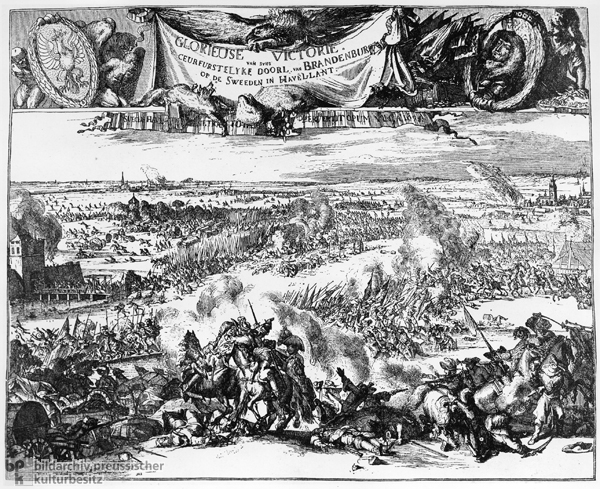













INTRODUCTION | DOCUMENTS | IMAGES | MAPS | EDITOR
|
In 1672, Louis XIV of France (r. 1661-1715), in alliance with Britain and Sweden, invaded the Dutch Republic, starting what became known as the Dutch War. A coalition consisting of the Holy Roman Empire, Brandenburg, and Spain supported the Dutch Republic, enabling it to survive against dire initial odds. The conflict and the concluding Peace of Nijmegen (1679) left France slightly chastened. It was prevented from annexing the Dutch Republic, but managed to acquire a number of new territories, including Franche-Comté. In the northern theater, Brandenburg's victory over Louis's Swedish allies at the Battle of Fehrbellin (1675) and the conquest of (Swedish) Western Pomerania was a testimony to Frederick William’s success in building up the nascent Brandenburg-Prussian army. Nonetheless, the peace settlement frustrated his aim of acquiring Pomeranian territory from the Swedes. Disgruntled by the lack of support from Emperor Leopold I (r. 1658-1705), Frederick William turned to a policy of subsidized alliance with France. Dutch copperplate engraving by an unknown artist, c. 1675.
© Bildarchiv Preußischer Kulturbesitz |
 print version
print version return to image list
return to image list previous image
previous image
